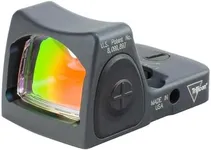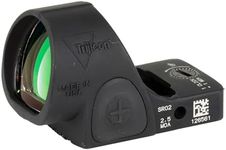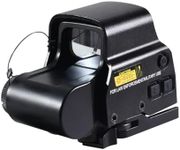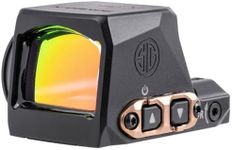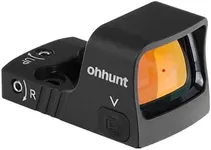Buying Guide for the Best Holographic Sights
Choosing the right holographic sight can significantly enhance your shooting experience, whether you're a hunter, a competitive shooter, or someone interested in self-defense. Holographic sights project a reticle onto a lens, allowing for quick target acquisition and improved accuracy. To find the best fit for you, it's important to understand the key specifications and how they align with your needs and preferences.Reticle PatternThe reticle pattern is the shape or design of the aiming point projected by the sight. This is important because different patterns can affect how quickly and accurately you can acquire your target. Common patterns include dots, circles, and crosshairs. If you need quick target acquisition for close-range shooting, a simple dot might be best. For more precision at longer ranges, a crosshair or a circle-dot combination could be more suitable.
Brightness SettingsBrightness settings allow you to adjust the intensity of the reticle to match the lighting conditions. This is crucial for maintaining visibility of the reticle in various environments, from bright daylight to low-light conditions. Look for sights with multiple brightness levels, including night vision compatibility if you plan to use it in the dark. Choose a sight with a range of settings that match the environments you expect to shoot in.
Battery LifeBattery life indicates how long the sight can operate before needing a battery replacement. This is important for ensuring that your sight is always ready when you need it. Battery life can range from hundreds to thousands of hours. If you use your sight frequently or for extended periods, opt for a model with longer battery life. For occasional use, a shorter battery life may be sufficient.
DurabilityDurability refers to the sight's ability to withstand harsh conditions and rough handling. This is important for ensuring that your sight remains functional in various environments. Look for features like waterproofing, shock resistance, and sturdy construction materials. If you plan to use the sight in rugged outdoor conditions, prioritize models with high durability. For more controlled environments, standard durability may suffice.
Field of ViewField of view (FOV) is the extent of the observable area you can see through the sight. A wider FOV allows for better situational awareness and quicker target acquisition. This is particularly important in dynamic shooting scenarios. If you need to track moving targets or engage in close-quarters combat, a wider FOV is beneficial. For stationary or long-range shooting, a narrower FOV might be acceptable.
Mounting CompatibilityMounting compatibility refers to the types of firearms or mounting systems the sight can be attached to. This is important for ensuring that the sight can be securely and properly mounted on your firearm. Check the mounting specifications to ensure compatibility with your firearm. If you have multiple firearms, look for a sight with versatile mounting options.
